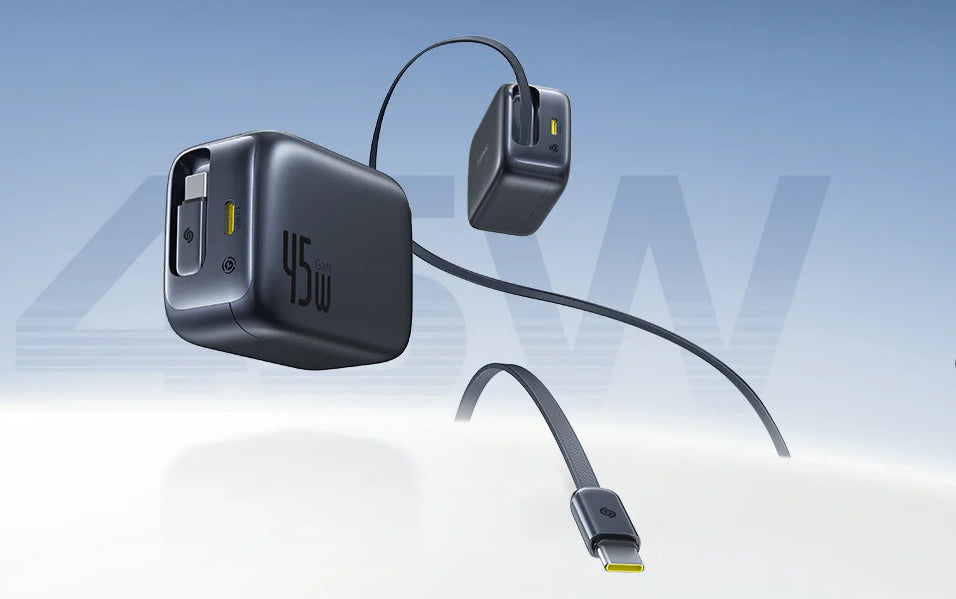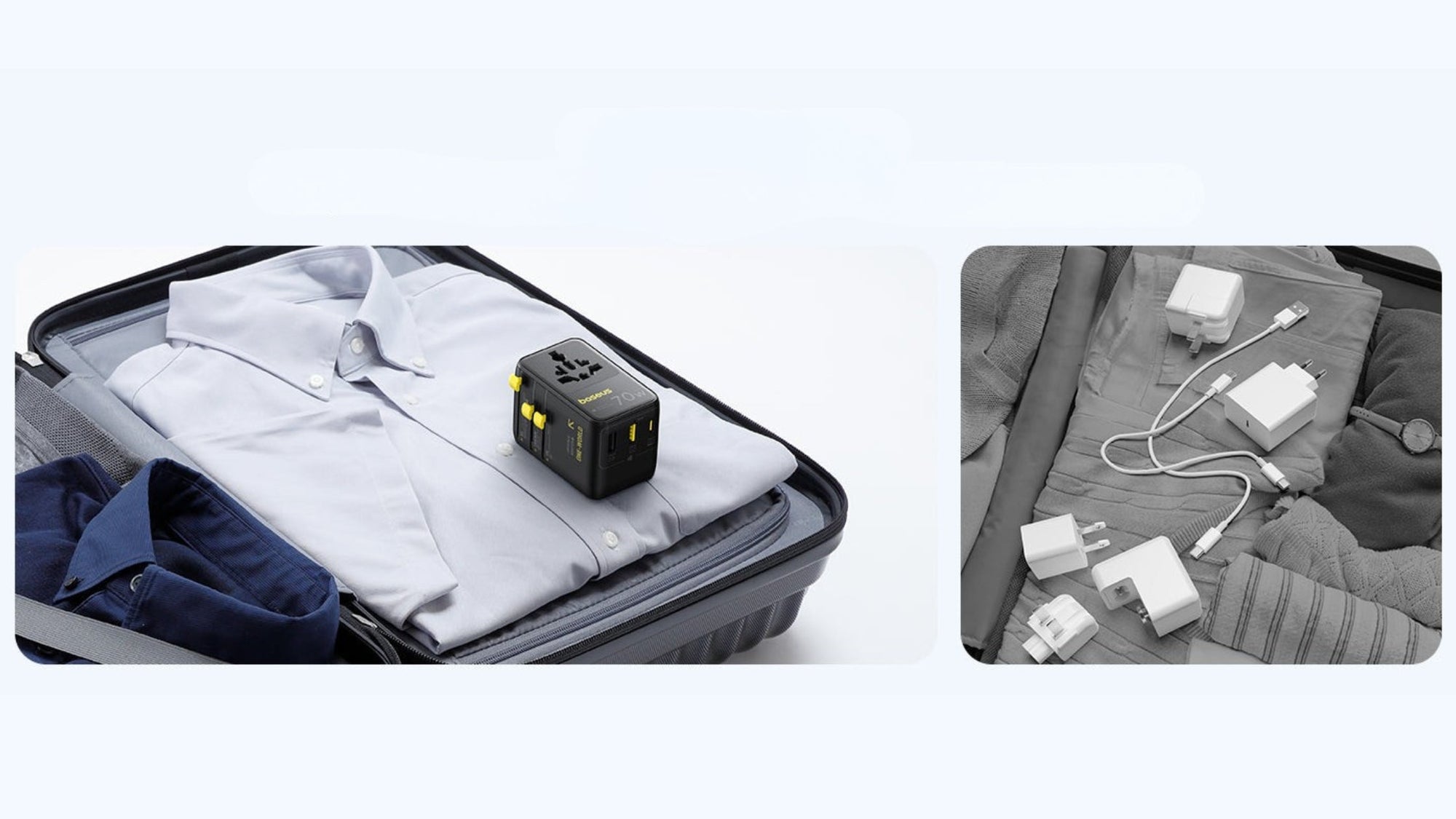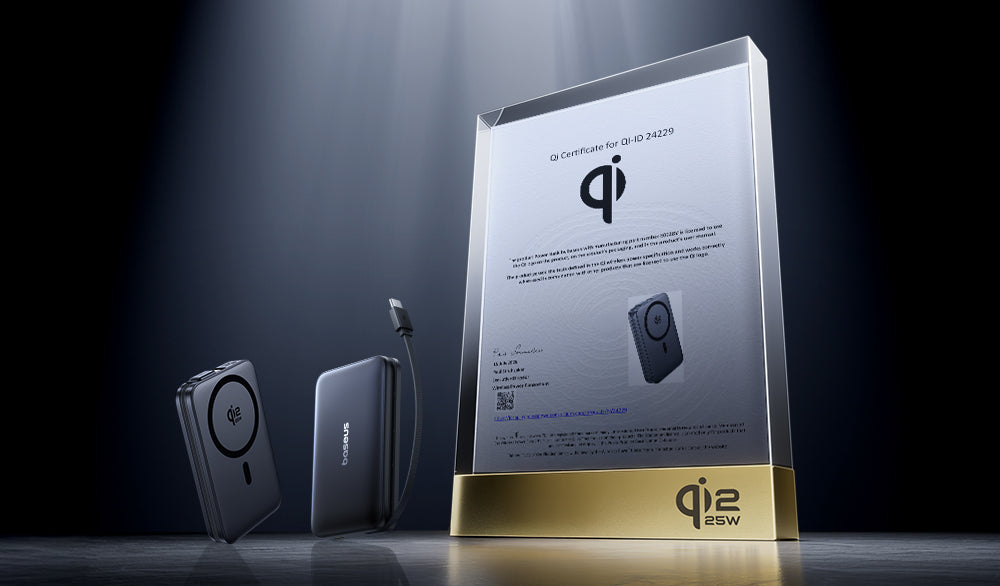You’ve just landed after a long-haul flight, navigated through a bustling airport in a new country, and finally arrived at your hotel room, ready to relax. You pull out your phone to message loved ones, only to see the dreaded 5% battery warning. No problem, you think, as you pull out your charger. But then you see it. The wall socket. It’s a completely foreign shape, a bizarre collection of round holes or slanted slots that looks nothing like the plug in your hand. In that moment, all your high-tech devices are rendered useless bricks.
This scenario, familiar to globetrotters everywhere, has one simple and elegant solution: the universal travel adapter. This small, ingenious device is arguably the single most essential accessory for any international traveler. It is the key that unlocks power anywhere in the world. This is your complete 2025 guide to understanding, choosing, and using the one piece of gear that will keep you connected, no matter where your adventures take you.
What is a Universal Travel Adapter?
Let's begin by answering the core question: what is a universal travel adapter? In simple terms, it is a single, self-contained device designed to allow the plug from one country to physically fit into the differently shaped wall socket of another. Think of it as a master key or a universal translator, but for power plugs.
Unlike single-region adapters, which only work for one specific type of conversion (e.g., from a US plug to a UK socket), a universal travel adapter incorporates multiple plug types into one compact unit. This means that with a single device, you are prepared for the power outlets in over 150 countries, from Europe to Australia, Asia to the Americas. It is the ultimate all-in-one solution for global connectivity.
Why You Absolutely Need a Universal Adapter for Travel
In an age of minimalist packing, every item in your luggage must justify its space. A universal adapter for travel doesn't just earn its place; it's a non-negotiable necessity. Here’s why:
-
Unmatched Convenience: The primary benefit is staggering convenience. Instead of packing a messy bag full of different-sized adapters for a multi-country trip, you carry one lightweight, compact device that covers virtually all your needs.
-
Cost-Effectiveness: Purchasing individual adapters for the UK, Europe, and Australia can quickly add up. A single universal adapter is almost always a more economical investment in the long run.
-
Future-Proofing Your Travels: With a universal adapter, you are always prepared. A last-minute trip to a new destination? An unexpected layover in a different country? You’ll never be caught without the ability to charge your devices. It’s an investment in travel readiness.
Adapter vs. Converter: A Critically Important Distinction
This is the most crucial concept to understand for the safety of your electronics. While the terms are often used interchangeably, they perform two fundamentally different jobs.
-
An ADAPTER simply changes the physical shape of the plug so it can fit into a foreign socket. It does not change the electrical voltage.
-
A CONVERTER is a much heavier, more complex device that actually changes the electrical voltage itself, stepping it up or down to match what your device requires.
Why does this matter? The world primarily runs on two voltage standards: 110-120V (used in the US, Canada, and Japan) and 220-240V (used in most of the rest of the world). If you plug a single-voltage 110V device (like an old hairdryer or electric shaver from the US) into a 240V socket in Europe using only an adapter, you will overload and destroy your device. It can be a dangerous mistake.
The good news? Nearly all modern personal electronics—laptops, smartphone chargers, camera battery chargers—are dual-voltage. Look at the fine print on your power brick; if you see a range like "INPUT: 100-240V," your device is dual-voltage and only needs an adapter. For these devices, a converter is unnecessary.
How Does a Universal Travel Adapter Work?
The clever engineering behind these devices is what makes them so practical. The question of how does a universal travel adapter work comes down to an elegant mechanical design, usually involving a system of slidable prongs.
Inside the adapter's housing is a set of prongs for each major region (US/AUS, UK, Europe). On the outside of the adapter, you'll find corresponding sliders or buttons.
-
You identify the socket type of the country you're in.
-
You push the corresponding slider forward. This action extends the correct set of prongs while simultaneously locking the others in place for safety.
-
The front of the adapter features a "universal" faceplate with a variety of openings designed to accept almost any type of plug from your home country.
This simple, interlocking mechanical system allows one device to safely and securely interface with dozens of different electrical standards around the globe.
Key Features to Look for in a Modern Travel Universal Power Adapter
As technology has evolved, so has the travel adapter. A modern device is much more than just a plug-changer; it's a sophisticated charging hub. Here’s what to look for:
-
Multiple USB Ports (USB-A and USB-C): In 2025, this is a must-have. A good adapter should allow you to charge your phone, tablet, and power bank simultaneously from a single wall outlet, reducing the number of power bricks you need to pack.
-
GaN (Gallium Nitride) Technology: This is a cutting-edge semiconductor material that allows chargers to be significantly smaller, more energy-efficient, and run cooler than traditional silicon-based chargers. A GaN adapter packs more power into a smaller, travel-friendly package.
-
High-Speed Charging (USB-C Power Delivery): Standard USB ports charge slowly. Look for a USB-C port with Power Delivery (PD), which can fast-charge compatible devices like modern smartphones, tablets, and even some laptops.
-
Built-in Safety Features: Safety is paramount. Ensure your adapter has a replaceable or auto-resetting fuse to protect against power surges. Look for safety certifications like CE, FCC, and RoHS, which indicate it has been tested to meet high safety and environmental standards.
-
The All-in-One Evolution: The lines are blurring between a simple adapter and a full-fledged charging station. Modern travel chargers are evolving to be a single solution for all your power needs. For instance, advanced devices like the Baseus Enercore CJ11 Fast Charger integrate many of these next-generation features. While not a traditional universal adapter with prongs, it represents the future of travel charging by combining high-power 67W GaN technology, multiple USB ports for all your devices, and even a built-in retractable USB-C cable into one incredibly compact unit. Pairing a simple adapter with a powerful hub like this can create the ultimate travel charging setup.

A Traveler's Cheat Sheet: How to Use a Universal Travel Adapter
Using your adapter is simple if you follow a few basic steps. This is how to use a universal travel adapter safely and effectively:
-
Identify the Socket: Look at the wall socket in your hotel room to determine which plug type is needed.
-
Select the Prongs: On your universal adapter, push the slider that corresponds to the correct region until the prongs click firmly into place.
-
Plug into the Wall: Securely plug the adapter into the wall socket. A small LED indicator light should turn on, confirming it's receiving power.
-
Connect Your Device: Plug your device's charger or cable into the front of the universal adapter.
-
Start Charging: Your device should now be charging as normal.
Navigating the Maze: A Quick Guide to World Plug Types
While your universal adapter handles the conversion, it's still helpful to know the major plug types you'll encounter. The International Electrotechnical Commission (IEC) maintains the definitive guide to world plugs, but here are the most common ones:
-
Type A & B: Characterized by two flat parallel pins (Type A) or two flat pins and a round grounding pin (Type B). Used in the USA, Canada, Mexico, and Japan.
-
Type C & F: The "Europlug." Features two round pins. Type C is ungrounded, while Type F has two grounding clips on the side. Used throughout most of Europe, Russia, and parts of Asia.
-
Type G: A large plug with three rectangular prongs in a triangular formation. Used in the United Kingdom, Ireland, Hong Kong, Singapore, and Malaysia.
-
Type I: Features two flat prongs in a "V" shape, with an optional third grounding prong. Used in Australia, New Zealand, China, and Argentina.
The Verdict: Your Indispensable Travel Companion
In the grand scheme of travel preparation, the humble universal travel adapter often gets overlooked until the last minute. Yet, it remains one of the most critical pieces of gear you can pack. It is the bridge between your essential devices and the power they need to function. It provides security, convenience, and the confidence to know that no matter where you are in the world, you can always stay connected. Investing in a high-quality, modern adapter isn't just buying a gadget; it's investing in a smoother, more stress-free travel experience.
Ready to find the perfect charging solution for your next journey?
Explore our innovative Enercore series and check out our best-selling travel gear.
 United States/English
United States/English






